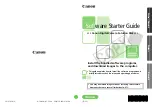
Designing Your Novell eDirectory Network
75
no
vd
ocx (
E
NU)
01
F
ebr
ua
ry
200
6
Networks with only a Windows, Linux, Solaris, AIX, or HP-UX server running eDirectory
have no Volume objects.
You might want to create multiple Organization objects if your company has the following needs:
• It comprises multiple companies that do not share the same network.
• It needs to represent separate business units or organizations.
• It has a policy or other internal guidelines that dictate that organizations remain separate.
Creating Organizational Units That Represent the Physical Network
First-level Organizational Unit design is important because it affects the partitioning and efficiency
of eDirectory.
For networks that span more than one building or location using either a LAN or a WAN, the first-
level Organizational Unit object design should be based on location. This allows you to partition
eDirectory in a way that keeps all objects in a partition at one location. It also provides a natural
place to make security and administrator assignments for each location.
2.2.3 Designing the Lower Layers of the Tree
You should design the lower layers of the tree based on the organization of network resources. You
have more freedom in designing the lower layers of an eDirectory tree than the upper layers because
lower-layer design affects only objects at the same location.
To create the lower layers of the tree, see
“Creating an Object” on page 94
and
“Modifying an
Object's Properties” on page 94
.
Determining Container, Tree, and Database Size
The number of lower-level container objects you create depends on the total number of objects in
your tree and your disk space and disk I/O speed limitations. eDirectory has been tested with over 1
billion objects in a single eDirectory tree, so the only real limitations are disk space, disk I/O speed,
and RAM to maintain performance. Keep in mind that the impact of replication on a large tree is
significant.
A typical object in eDirectory is 3 to 5 KB in size. Using this object size, you can quickly calculate
disk space requirements for the number of objects you have or need. Keep in mind that the object
size will grow depending upon how many attributes are completed with data and what the data is. If
objects will hold binary large object (BLOB) data such as pictures, sounds, or biometrics, the object
size will subsequently grow.
The larger the partitions, the slower the replication cycles. If you are using products that require the
use of eDirectory, such as ZENworks and DNS/DHCP services, the eDirectory objects created by
these products will affect the size of the containers they are located in. You might consider placing
objects that are for administration purposes only, such as DNS/DHCP, in their own partition so user
access is not affected with slower replication. Also, managing partitions and replicas will be easier.
If you are interested, you can easily determine the size of your eDirectory database or the Directory
Information Base (DIB) Set.
• For NetWare, download toolbox.nlm from the
Novell Support Web site (http://
support.novell.com)
to see the
sys:_netware
directory on your server.
Summary of Contents for EDIRECTORY 8.8 - GUIDE
Page 4: ...novdocx ENU 01 February 2006...
Page 16: ...16 Novell eDirectory 8 8 Administration Guide novdocx ENU 01 February 2006...
Page 68: ...68 Novell eDirectory 8 8 Administration Guide novdocx ENU 01 February 2006...
Page 90: ...90 Novell eDirectory 8 8 Administration Guide novdocx ENU 01 February 2006...
Page 116: ...116 Novell eDirectory 8 8 Administration Guide novdocx ENU 01 February 2006...
Page 128: ...128 Novell eDirectory 8 8 Administration Guide novdocx ENU 01 February 2006...
Page 184: ...184 Novell eDirectory 8 8 Administration Guide novdocx ENU 01 February 2006...
Page 249: ...250 Novell eDirectory 8 8 Administration Guide novdocx ENU 01 February 2006...
Page 307: ...308 Novell eDirectory 8 8 Administration Guide novdocx ENU 01 February 2006...
Page 333: ...334 Novell eDirectory 8 8 Administration Guide novdocx ENU 01 February 2006...
Page 371: ...372 Novell eDirectory 8 8 Administration Guide novdocx ENU 01 February 2006...
Page 439: ...440 Novell eDirectory 8 8 Administration Guide novdocx ENU 01 February 2006...
Page 519: ...520 Novell eDirectory 8 8 Administration Guide novdocx ENU 01 February 2006...
Page 529: ...530 Novell eDirectory 8 8 Administration Guide novdocx ENU 01 February 2006...
Page 555: ...556 Novell eDirectory 8 8 Administration Guide novdocx ENU 01 February 2006...
















































